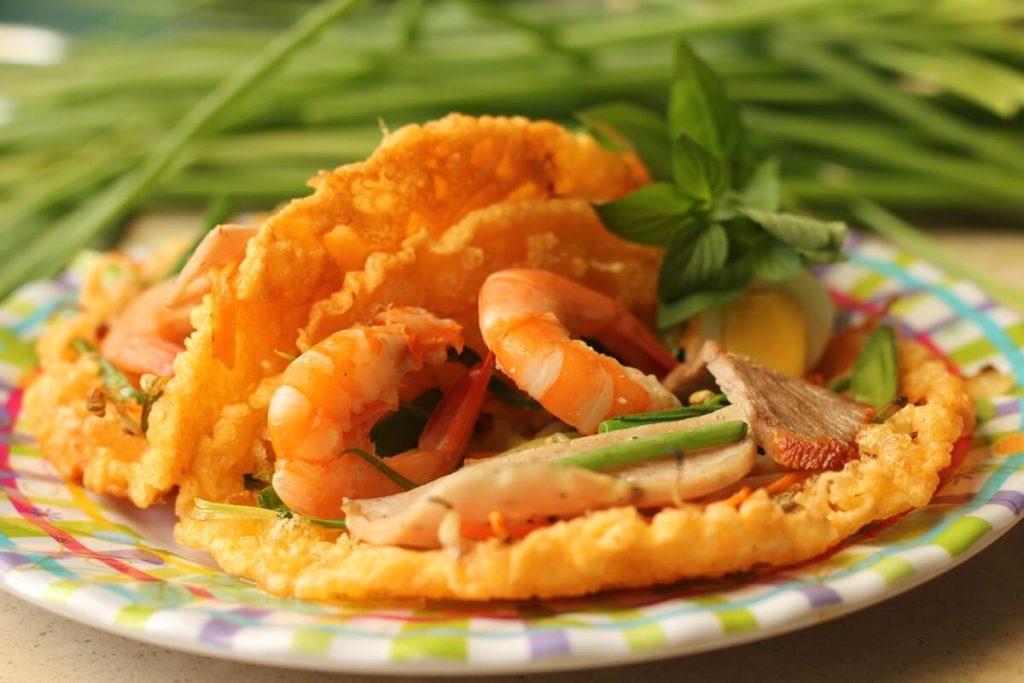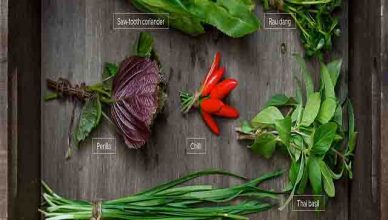Hue Tapioca Dumplings (Banh Bot Loc Hue): A Culinary Gem
Hue, Vietnam’s gastronomic haven, is renowned for its iconic dishes like Com Hen (mussel rice) and Bun Bo Hue (beef noodle soup). But its culinary brilliance truly shines in lesser-known gems, none more captivating than the Hue tapioca dumpling, locally known as Banh Bot Loc. This chewy, flavorful treat perfectly embodies Hue’s knack for elevating simple ingredients into something extraordinary, making it an unmissable addition to any Hue food tour.
For travelers and food lovers, savoring authentic Hue tapioca dumplings offers a delicious and immersive taste of the city’s rich culinary heritage.

What Are Hue Tapioca Dumplings (Banh Bot Loc)?
Banh Bot Loc Hue are small, clear-looking, and delightfully chewy tapioca dumplings, a beloved specialty in Vietnamese cuisine. They can be enjoyed as appetizers or light snacks. Traditionally, these savory dumplings are filled with a tantalizing combination of fresh shrimp and tender pork belly, often generously topped with crispy fried shallots and served with a signature sweet chili fish sauce.
Originating from Hue, the former imperial capital of the Nguyễn dynasty, Hue tapioca dumplings are celebrated for their simple yet sophisticated flavors, reflecting the city’s refined culinary traditions.

The Etymology of Banh Bot Loc
The dish’s name, bánh bột lọc, is believed to derive from its transparent, dumpling-like appearance. The term bánh bột lọc Huế loosely translates to “clear flour cake from Hue.”
- Bánh: A versatile Vietnamese term meaning “cake” or “bread,” but also broadly used for foods made from various types of flour (most commonly rice or tapioca).
- Bột: Literally means “flour” (without specifying the type).
- Lọc: Means “refine” or “clarify,” referring to the translucent quality of the tapioca dough.

The Craft of Making Hue Tapioca Dumplings
The magic of Hue tapioca dumplings lies in their meticulous preparation, a true testament to Hue’s culinary artistry.
Key Ingredients & Preparation:
- Savory Filling: It begins with fresh shrimp and bacon (pork belly), finely chopped and simmered to unlock their natural sweetness and create a rich, aromatic base.
- Translucent Dough: The star ingredient, tapioca flour, is expertly blended with a pinch of salt, sugar, and a touch of oil. This mixture is then kneaded with boiling water until it forms a smooth, soft, and elastic dough.
- Shaping & Filling: The pliable dough is portioned into small balls, each skillfully flattened. A spoonful of the savory shrimp and pork filling is placed in the center, and the dough is carefully folded over, with the edges pinched together to seal it, creating the signature dumpling shape.
Cooking & Serving:
- Steamed to Perfection: The dumplings are either steamed or boiled until they become translucent, signaling their perfect chewy texture and readiness.
- Banana Leaf Wrapped (Bánh Bột Lọc Lá): Some variations are wrapped in blanched banana leaves before steaming, known as Bánh Bột Lọc Lá. This imparts a subtle aroma and keeps the dumplings moist.
- Bare (Bánh Bột Lọc Trần): Dumplings steamed or boiled without the banana leaf are called Bánh Bột Lọc Trần.
- Signature Sauce: Hue tapioca dumplings are always served with a distinctive sweet chili fish sauce, often sourced from famous local areas like Thuan An, Vinh Hien, or Canh Duong. This sauce, often spiked with fiery chili slices, elevates the dish to new heights.
Each bite reveals a delightful symphony of textures and tastes: the fragrant, chewy tapioca shell, the sweet succulence of shrimp and bacon, and the bold, tangy, spicy kick of the local dipping sauce.

Variations
While traditionally filled with a whole grilled shrimp (sometimes with shell on) and a slice of pork belly, variations of Hue tapioca dumplings can include:
- Shrimp without the shell
- Ground pork
- Mushrooms
- Onions
- Some recipes may also incorporate corn starch and rice flour into the wrapper for different textures.
Regardless of the method or specific filling, Banh Bot Loc can be frozen for later use, making them a convenient delicacy.

The 7 Best Places to Eat Hue Tapioca Dumplings (Banh Bot Loc) in Hue
While you can certainly try to replicate the Banh Bot Loc recipe at home, savoring authentic Hue tapioca dumplings fresh from a local Hue eatery offers an unparalleled experience. Here are seven top places to find this delightful Hue specialty:
1. Bà Vân Restaurant
- Address: No. 106B, Lương Ngọc Quyến Street, Hue Located conveniently in the heart of Hue, Bà Vân Restaurant is highly recommended for its traditional flavors of Banh Bot Loc. Beyond this specialty, visitors can also purchase authentic Hue products like lotus seeds, fermented shrimp paste, royal tea, and sesame candy, all known for their reasonable prices and high quality.
2. Đức Bửu Village
- Address: Đức Bửu Village, Hương Sơ Ward, Hue For a deeper dive into the world of Hue’s traditional cakes, a visit to Đức Bửu Village is a must. This community boasts a 150-year legacy of cake-making. Here, you can sample and buy a delightful variety of cakes, including Banh Bot Loc, all crafted using the village’s distinctive recipes, resulting in chewier dough and richer fillings. Visitors are also welcomed to learn about the ingredients and the meticulous cake-making process from skilled artisans.
3. Huế Xưa Restaurant
- Address: No. 1, Nguyễn Bỉnh Khiêm Street, Hue Renowned for its authentic taste and clean, inviting setting, Huế Xưa Restaurant is a top pick for Banh Bot Loc lovers. Its diverse menu showcases a wide array of traditional Hue dishes, such as Banh Beo, Banh Ram It, Nem Lui (grilled pork skewers), Banh Khoai (crispy rice pancakes), and shrimp cakes. Reasonable pricing and attentive service further enhance the restaurant’s appeal. If you’re wondering “Where to eat Hue tapioca dumplings?”, Huế Xưa is a great starting point!
4. O Lé Restaurant
- Address: No. 17/9, Alley 104, Kim Long Street, Hue For a truly authentic taste of Banh Bot Loc, head to O Lé Restaurant. With over 50 years of history, it offers a serene ambiance with lush greenery and the soothing melody of singing birds. Here, you can savor meticulously prepared traditional Hue dishes. For those wishing to take these treats home, the restaurant conveniently provides vacuum-sealed packaging.
5. Chi Restaurant
- Address: No. 52, Lê Viết Lượng Street, Hue Chi Restaurant is a favorite among locals and tourists alike, known for its delicious, affordable traditional cakes. Its menu boasts all the classics – Banh Bot Loc, Banh Beo, and Banh Ram It – each bursting with authentic flavors. With friendly staff and complimentary iced tea, along with packaging services for takeaway, Chi Restaurant ensures a delightful dining experience.
6. Bà Cư Restaurant
- Address: No. 23, Alley 177, Phan Đình Phùng Street, Hue Tucked away in an alley near An Định Palace, Bà Cư Restaurant is a hidden gem for people who love Hue’s traditional cakes. Visitors often praise its spacious, clean, and serene atmosphere. Here, you can savor a variety of Hue’s signature dishes, including Banh Bot Loc, as well as more unique offerings like Banh Uot and grilled shrimp cakes. Make sure to savor the delicious Banh Bot Loc on your trip to Hue!
7. Trung Bô Restaurant
- Address: No. 16, Tô Hiến Thành Street, Hue At Trung Bô Restaurant, you will not only enjoy delicious Banh Bot Loc but also witness the fascinating process of making these delicacies by skilled vendors. The freshly steamed Banh Bot Loc, Banh Beo, and Banh Ram It, served with various toppings, are sure to tantalize your taste buds. Located conveniently near Đồng Ba Market, it is a must-visit to satisfy your hunger for authentic Hue flavors.

Hue’s Culinary Delights: Beyond Tapioca Dumplings
While Hue’s Banh Bot Loc offers a delightful introduction to its unique cuisine, your culinary adventure in the city doesn’t have to stop there! Beyond these iconic tapioca dumplings, prepare to be delighted by the rich and diverse flavors of other classic Hue dishes, such as:
- Hue Crispy Pancake (Bánh Khoái): A savory, crispy delight often served with a special peanut dipping sauce.
- Grilled Pork Salad Noodle (Bún Thịt Nướng): Fresh rice noodles topped with tender grilled pork and vibrant fresh herbs, typically served with a savory-sweet dressing.
- Clam Rice (Cơm Hến): A quintessential Hue specialty – spicy, flavorful rice mixed with tiny clams, crunchy pork cracklings, and aromatic herbs.
- Grilled Lemongrass Pork Skewers (Nem Lụi): Fragrant, succulent pork skewers best enjoyed wrapped in rice paper with fresh greens and a special dipping sauce.
- Salt Coffee (Cà Phê Muối): A unique and beloved local beverage, offering a delightful blend of salty and sweet.
Exploring these local delicacies truly completes the authentic Hue experience, showcasing why this city is a culinary paradise!

Enhance Your Hue Experience: Join a Hue Food Tour!
Want to explore the real taste of Hue, including its vibrant food scene and more local food insights? Join our Hue Street Food Tour by Cyclo or Hue Cooking Class with Hue Food Tour – top-rated on TripAdvisor, Viator, Cruise Critic, and more!
What You’ll Experience:
- Learn to cook authentic dishes like Hue Tapioca Dumplings (Banh Bot Loc).
- Taste over 10 traditional Hue foods, including Hue Tapioca Dumplings (Banh Bot Loc).
- Discover hidden food gems with knowledgeable local guides.
- Gain cultural insights behind every unique recipe.
We guarantee an unforgettable journey into Hue’s vibrant food scene – delicious, fun, and authentic! Create unforgettable memories for you and your family.

David Nguyen – Hue Food Expert
David Nguyen is a respected Hue food expert and experienced local guide with over 15 years of exploring Vietnam’s culinary traditions. With a deep passion for Hue cuisine, he leads food tours that offer more than just great meals – they provide cultural insight, authentic experiences, and memorable connections with local people. David’s tours are highly rated by travelers on TripAdvisor, Viator, and other top platforms. Whether you’re tasting royal-era dishes or street food favorites, David ensures each tour is flavorful, informative, and unforgettable. Join him to discover the true heart of Hue through its food and heritage.






